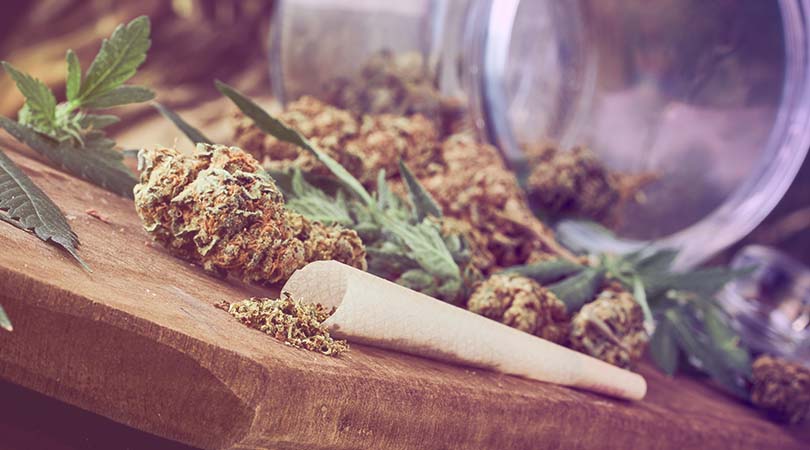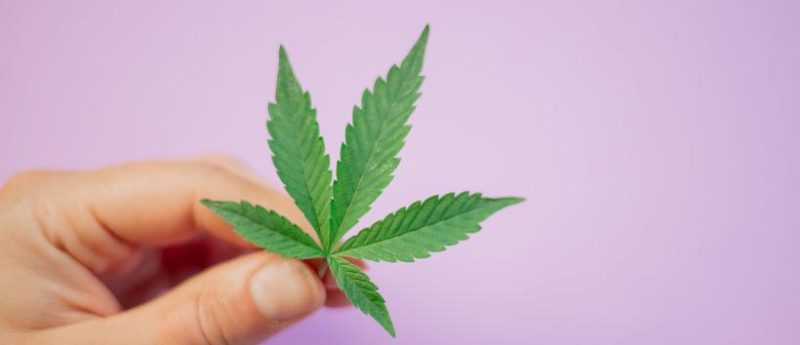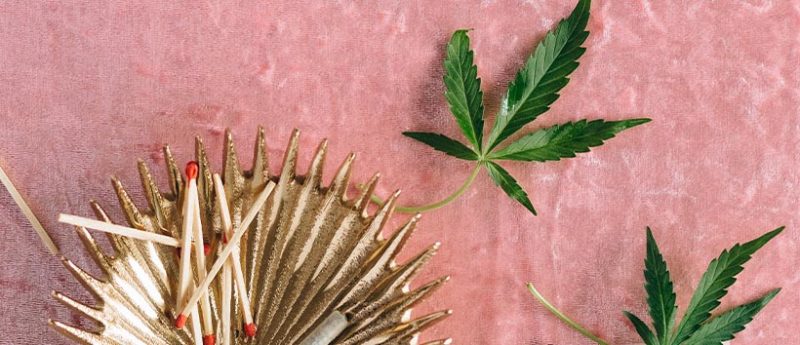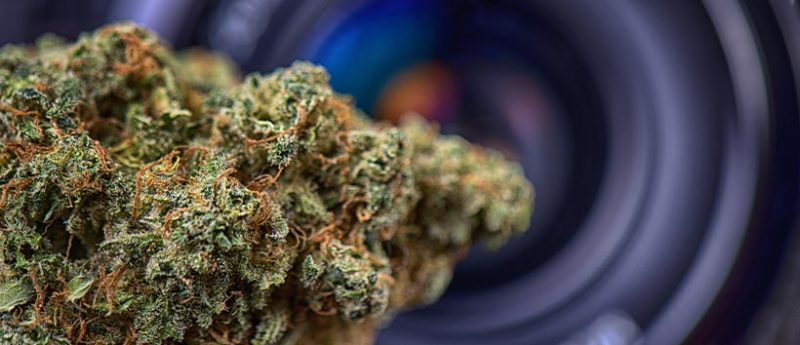Cannabis
Indica vs Sativa Guide
Anyone learning about cannabis and its uses would have heard about the indica and sativa strains. They are the primary categories of marijuana strains. A strain is a plant subspecies, and thousands of them fall under those main cannabis categories.
Additionally, a strain’s properties can change depending on where it’s grown. Cannabis is easily influenced by elements such as climate, location, and soil types. Initially, this led to the belief that the indica and sativa strains have distinctive characteristics. However, as things develop, that’s becoming less true.
The introduction of hybrid strains has also muddied the waters more as growers have combined the indica and sativa strains to create unique strains of marijuana. This article will discuss each strain’s leading properties and what users should know when making the indica versus sativa decision.
A Little Information About Cannabis
Before getting into the differences between the indica and sativa strains, let’s look at cannabis as a whole. The cannabis plant is a well-known psychoactive with many names, including weed, pot, marijuana, ganja, and marijuana.
The plant was first grown over a thousand years ago and has spread across the planet since. Its varying locations have further influenced the characteristics of each strain. In some cases, it’s possible to differentiate weed plants based on where they were grown.
Cannabis plants can be further broken down based on their THC content. Plants with less than 0.3% THC are known as hemp, while those with a higher percentage are known as marijuana.
There are also two types of cannabis plants – the Photoperiod and Ruderalis (or Autoflower) Strains. Photoperiod plants need a particular light schedule to grow, whereas ruderalis plants will grow within 150 days regardless of light exposure.
A Look at the Cannabis Indica and Sativa Strains
The Beginnings of the Indica Weed Strain
The cannabis indica weed is thought to be native to the Hindu Kush Mountains and countries like Turkey, Pakistan, India, and Afghanistan. It’s also believed that this weed’s origin is where the popular term ‘kush’ comes from.
The Main Characteristics of Cannabis Indica
The main differences between the indica and sativa strains are how they grow and their appearance. Cannabis indica marijuana flowers quickly and grows well in cold conditions. Its leaves are broad, and its buds are dense. However, the plants also tend to be short.
These plants commonly have higher CBD and low THC levels, but this is not always the case. For example, the indica weed is widely known for its couch locking effects, and many users consume it for relaxation purposes.
Typical Medical Uses and Effects of the Indica Strain
Cannabis Indica strains can be used for medical purposes based on the effect they have. For example, persons who use it can experience relaxation, euphoria, sedation, and an increased appetite. For this reason, doctors are likely to prescribe this strain for illnesses such as glaucoma, addiction, inflammation, psychiatric disorders, insomnia, epilepsy, and autoimmune diseases, among others.
Highly-Rated Indica Weed Strains
This list shows the most popular and best cannabis indica strains that are available in Canada.
- Ace of Spades Strain
- Afghani Strain
- Berries & Creme Strain
- Big Bud Strain
- Black Diamond Strain
- Black Domina Strain
- Black Gas Strain
- Black Mamba Strain
- Blue Cheese Strain
- Blue God Strain
- Bubba Kush Strain
- Chemdawg Strain
- Chronic Kush Strain
- Critical Kush Strain
- Critical Mass Strain
- Dank Sinatra Strain
- Darth Vader Strain
- Death Bubba Strain
- Death Star Strain
- Dr. Funk Strain
- El Chapo Strain
- El Jefe Strain
- Gelato Strain
- Gorilla Glue Strain
- Grand Daddy Purple Strain
- Grease Monkey Strain
- Hashplant Strain
- Headband Strain
- Hindu Kush Strain
- Island Pink Strain
- King Louis XIII Strain
- Kosher Kush Strain
- LA Confidential Strain
- LSD Strain
- Master Kush Strain
- Northern Lights Strain
- Nuken Strain
- OG Kush Strain
- Pink Kush Strain
- Platinum Kush Strain
- Purple Candy Strain
- Purple Kush Strain
- Purple Space Cookies Strain
- Purple Urkle Strain
- Rockstar Strain
- Sherbet Cake Strain
- Snow White Strain
- Star Killer Strain
- Tangerine Dream Strain
- Tom Ford Strain
- Violator Kush Strain
- Walter White Strain
The Beginnings of the Sativa Weed Strain
The cannabis sativa strain originated in countries located in Central America, Southeast Asia, and Africa. These long, hot climates likely influenced how the plant grows now.
The Main Characteristics of Cannabis Sativa
The sativa weed flowers more slowly and prefers hotter climates. Its leaves are thin, while the buds are cone-shaped. The sativa strain plants are usually taller than indica ones. Users usually associate the sativa strains with giving them a high-energy boost.
Typical Medical Uses and Effects of the Sativa Strain
Along with a boost in energy, sativa weed can cause an increase in focus, creativity, liveliness, and happiness. To this end, doctors may prescribe it for illnesses such as fatigue, vomiting, spasticity, addiction, epilepsy, glaucoma, and movement disorders.
Highly-Rated Sativa Weed Strains
This comprehensive list has them all for persons interested in the best cannabis sativa strains that Canada offers.
- Amnesia Haze Strain
- Blue Dream Strain
- Duke Nukem Strain
- Durban Poison Strain
- Grapefruit Strain
- Jet Fuel Strain
- King Tut Strain
- Lemon Skunk Strain
- Love Potion Strain
- Maui Wowie Strain
- Mimosa Strain
- Moby Dick Strain
- Pineapple Express Strain
- Purple Haze Strain
- Red Congo Strain
- Scout Master Strain
- Sour Diesel Strain
- Sour Tangie Strain
- Strawberry Cough Strain
- Super Lemon Haze Strain
- Trainwreck Strain
- Wedding Cake Strain
- Wifi Strain
Important Information on Cannabis Hybrid Strains
Hybrid strains combine the traits of indica and sativa weed. In many cases, these strains have been designed to incorporate the two major cannabis marijuana strains’ best characteristics.
The Main Characteristics of Hybrid Marijuana Strains
Being a hybrid, these plants can resemble the sativa and indica strains in their appearance and characteristics. Hybrid strains can be acceptable to consume throughout the day, but these properties widely vary, so users should do thorough research.
Highly-Rated Hybrid Weed Strains
For users looking for the best cannabis hybrid strains in Canada, these are the most sought-after.
- Alien OG Strain
- Atomic Bomb Strain
- Black Tuna Strain
- Blueberry Strain
- Bruce Banner Strain
- Charlotte’s Web Strain
- Gas Mask Strain
- Ghost Train Strain
- Girl Scout Cookies Strain
- God Bud Strain
- Green Crack Strain
- Ice Wreck Strain
- Kushberry Strain
- Mango Haze Strain
- Master Bubba Strain
- Mataro Blue Strain
- MK Ultra Strain
- Peanut Butter Breath Strain
- Phantom OG Strain
- Pineapple Strain
- Pink Star Strain
- Purple Candy Strain
- Sensi Star Strain
- Skywalker Strain
- White Castle Strain
- White Widow Strain
Indica vs Sativa: Summary of Properties and Characteristics
This table summarizes the main properties and characteristics of the cannabis indica and sativa strains.
| Characteristics | Indica Strain | Sativa Strain |
| Appearance of Plant | Short and bushy
Has broad, fat leaves Short – medium in stature |
Tall and lanky
Has thin, narrow leaves Medium-large in stature |
| Appearance of Flowers | Medium-sized and round
Dense arrangement |
Large and cone-shaped
Fluffy arrangement |
| Common Benefits | This strain usually leaves the user feeling:
|
This strain usually leaves the user feeling:
|
| Common Medical Uses | This strain is typically used to alleviate the symptoms of:
|
This strain is typically used to alleviate the symptoms of:
|
| Other Information | Great for colder climates
Works well in short seasons Has short flowering cycles (usually 8 – 9 weeks) |
Great for warm climates
Works well in long seasons Has a longer flowering cycle (usually more than ten weeks) |
When comparing the two strains using the table above, similarities in effects and medicinal uses can be seen. These similarities further highlight why it’s essential to investigate how users can choose the cannabis strain most suited for them.
What’s the Best Way to Choose a Marijuana Strain?
Having looked at all the indica and sativa strains’ properties and characteristics, it’s apparent that there can be some overlap. That explains why it’s not a good idea to request one specific strain over the other based on the effect it could have.
For example, it’s commonly believed that cannabis indica strains will help persons sleep. However, according to research, indica weed can give users a boost of energy that will have the opposite effect.
On the other hand, persons might opt for cannabis sativa strains because it’s supposed to be the one that can be used at any time of day. But, again, research has shown that indica marijuana can have the same properties.
Instead of relying on such broad information, it’s recommended that persons get specific information on the cannabis strains that are available and use that. Some of the information that will help decide includes the cannabinoid or terpene content of the strain and someone’s body make-up, their frequency of use, and how they consume the marijuana.
An In-Depth Look at Cannabinoids
Defining Cannabinoids
Cannabis plants have well over 480 natural components, 66 of which are known as cannabinoids. Delta-9-tetrahydrocannabinol, or THC, is the most widely known of these compounds because of its psychoactive effects. The other cannabinoids, however, are just as important.
While THC binds with the brain’s receptors in the body’s endocannabinoid system (ECS) to have its intended effect, the other cannabinoids regulate the interaction. Given that the types of cannabinoids and their levels will vary from one strain to the other, it explains why some weed strains behave in different ways when consumed.
That’s why users need to get detailed information about what weed strains contain before using them.
Cannabinoids Commonly Found in Cannabis
These are the cannabinoids that are found in both the indica and sativa strains. It’s the combination of interactions between these compounds and terpenes that give marijuana its well-known effects.
- Cannabichromene (CBC)
- Cannabicyclol (CBL)
- Cannabidiol (CBD)
- Cannabielsoin (CBE)
- Cannabigerol (CBG)
- Cannabinodiol (CBDL)
- Cannabinol (CBN)
- Cannabitriol (CBT)
- Tetrahydrocannabinol (THC)
- Tetrahydrocannabinol Acid ((THCA)
Comparing THC and CBD
THC and CBD are two of the most commonly known components of cannabis. THC is the primary cannabinoid behind the psychoactive properties of cannabis. The THC content of a cannabis plant can usually show how effective it is at getting users ‘high’.
On the other hand, CBD has no psychoactive properties and only regulates how THC reacts with the body. In some cases, CBD helps reduce the inflammation caused by continuous THC use.
In the sativa vs indica debate, it’s important to note that sativa strains usually have higher THC content than their indica counterparts.
What About CBN?
When THC breaks down from prolonged exposure to light, the result is CBN. The component has a quarter of the potency of THC and is not classified as psychoactive. However, this doesn’t mean users won’t feel its effects. Plants with CBN are still known for being highly sedating.
Some persons who grow their marijuana have even been known to let the plants flower longer, so there’s enough time for the THC to break down into CBN.
An In-Depth Look at Terpenes
Defining Terpenes
Terpenes are chemical compounds that are the source of the aromas associated with certain plants. In cannabis, in particular, these terpenes work together to give the strains their smell and specific properties. This interaction is called the entourage effect.
The quantities and ratios of terpenes vary from one strain to another, so users should research when choosing their marijuana. In the next section, we’ll look at the primary terpenes in cannabis and their properties.
Major Terpenes Commonly Found in Cannabis
These are the principal terpenes that can be found in cannabis. Each one has vital characteristics that influence how the strains work.
Myrcene
Myrcene is a significant component of most marijuana strains. It has a fruity, musky aroma and can cause feelings of relaxation.
Limonene
Limonene is the second most common component in certain strains of cannabis. It gives the weed a citrusy aroma. This terpene has been known to increase the user’s mood and reduce stress.
Pinene
This terpene is also found in pine trees. It can make the user more alert while promoting the retention of memories.
Caryophyllene
Caryophyllene gives certain marijuana strains a peppery undertone and has similar characteristics as cannabinoids. Its primary purpose is as a stress reliever.
Linalool
This terpene gives marijuana its characteristic aroma. In addition, it’s been shown to enhance a user’s mood and have sedating effects.
Terpinolene
Terpinolene has a fruity aroma and can boost the marijuana user’s mood.
Bisabolol
Bisabolol also has a floral aroma. In addition, this terpene is known for its analgesic properties and can help treat wounds.
Other Factors to Consider
As noted before, three other factors should be borne in mind when choosing a cannabis strain.
The Frequency of Use
Persons who use either the cannabis indica or sativa strains will develop a level of tolerance. That means they will experience lower effects than someone who is using weed for the first time.
The User’s Body Chemistry
The specific effect marijuana strains have on a user will vary depending on their body chemistry. For example, differences in body weight can impact how much the user needs to feel the effects. Additionally, a fast metabolism may make the weed strain act faster but give the user a shorter high.
The Way Marijuana is Consumed
Users experience immediate but short-lived THC effects when smoking or vaping weed. On the other hand, Edibles have to be metabolized so the effects won’t be experienced as quickly, but they last longer.
A Final Word
There’s a lot of information in this Indica vs Sativa guide, so it’s a good idea to wrap up using the basics. Persons interested in choosing between cannabis sativa and indica strains will do well to learn everything they can. First, however, it’s vital to pay attention to all the factors affecting how the chosen strain works.
To get the best results, users need to know the properties of the specific marijuana strains that are available. The strain’s cannabinoid and terpene content should always be investigated. That includes the particular ratios of THC, CBD, and CBN where applicable.
Other factors such as body chemistry, the frequency of use, and the method of consumption will also play a part in how effective the cannabis strain is. It can also help get feedback from other users who are seeking the same kind of experience.
Where’s a Great Place Online to Buy the Cannabis?
Regardless of the cannabis strain you’re looking for, buying weed online is very convenient. The best place to do that is at Weed Delivery Vancouver. Don’t just take our word for it. See what other are saying on sites such as Weed Maps, Weed List, and Cannabis Ontario. Our cannabis dispensary offers a wide variety of indica, sativa, and hybrid strains that will meet your needs. Order now, and you will get 10% off complimentary gifts and $10 in-store credit just for signing up!
References
- Hartney, Elizabeth. (2020, July 22). What is THC? Very Well Mind. Available at: https://www.verywellmind.com/what-is-thc-in-marijuana-4080556
- Grinspoon, P. (2020, April 15). Cannabidiol (CBD) — what we know and what we don’t. Harvard Health. Available at: https://www.health.harvard.edu/blog/cannabidiol-cbd-what-we-know-and-what-we-dont-2018082414476
- Weed List. (2021, September 23). Ordering Weed Online in Canada. Available at: https://weedlist.org/
- Powell, A. (2020, February 24, 2020). What we know and don’t know about pot. The Harvard Gazette. Available at: https://news.harvard.edu/gazette/story/2020/02/professor-explores-marijuanas-safe-use-and-addiction/
- Daily Marijuana. (2021, September 1). Buy Weed Online. Available at: https://www.dailymarijuana.io/
- Johnson, Jon. (2020, March 6). What to Know About Terpenes. Medical News Today. Available At: https://www.medicalnewstoday.com/articles/what-are-terpenes
- Project CBD. (2020). Terpenes & The “Entourage Effect.” Available At: https://www.projectcbd.org/science/terpenes-entourage-effect




